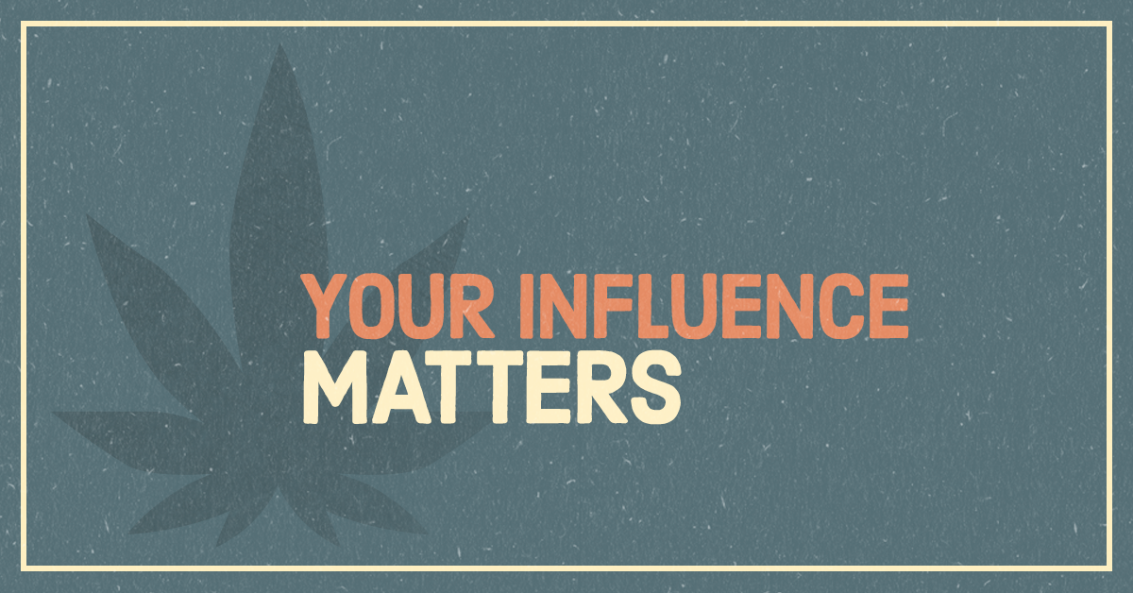 “Marijuana remains the most abused illegal substance among our youth, today. By the time they graduate high school, about 46 percent of U.S. teens will have tried marijuana at least once in their lifetime.”[1] As parents, we worry and strive to keep our children on a safe and healthy path, working to give them the tools necessary to live a safe and healthy life. With the growing legalization of marijuana across the country, the conversation around and about marijuana has changed. How should we be adjusting our conversations with our youth that take into account the changing laws yet guides them in such a way that they understand the real and true dangers of drug use?
“Marijuana remains the most abused illegal substance among our youth, today. By the time they graduate high school, about 46 percent of U.S. teens will have tried marijuana at least once in their lifetime.”[1] As parents, we worry and strive to keep our children on a safe and healthy path, working to give them the tools necessary to live a safe and healthy life. With the growing legalization of marijuana across the country, the conversation around and about marijuana has changed. How should we be adjusting our conversations with our youth that take into account the changing laws yet guides them in such a way that they understand the real and true dangers of drug use?
We must walk the fine line between helping youth understand the ramifications of using drugs without resorting to ineffective scare-tactics that may only entice them to find out for themselves. Remember the television ad, “This is your brain on drugs?” It was a catch-all comment, lumping together all drugs, and it “affected at least two generations' views on the dangers of drug use.”[2] While some found this commercial to be a strong deterrent, others saw it as a wild overstatement, with some unfortunate results; “When I saw people that were on the high school honor roll smoking pot, I realized that the commercial's message was false.”[3] We must take a different course and understand that, while we need to guide the discussion, we must not forget our youth want to be seen as independent and individual; able to make their own decisions, come to their own conclusions.
In this age of instant information, youth are able to access a vast amount of knowledge and verify the content of what they are being told. They will seek out the truth on their own and so, as parents, teachers and leaders, we must work to be seen as reliable, trustworthy sources of information. To that end, there have recently been a number of outstanding resources published, with some consistent key points to help guide us in our conversations with kids.
- Teens view marijuana as “not dangerous.” – Not only is marijuana dangerous to a youth’s general health, it is also dangerous to their development. Studies show our brains continue to develop up to age 25.
- Teens view marijuana as less dangerous than alcohol. – Marijuana use slows your reflexes and response time and presents a real danger when operating a vehicle.
- Teens view marijuana as less dangerous than cigarettes. – All smoking is harmful to your lungs and marijuana contains more tar than cigarettes. If ingested, you may consume too much because it takes longer to feel the effects. In addition, the new synthetic forms of marijuana are concentrated and not regulated, so are far more dangerous than advertised.
- Teens assume that because marijuana is a “natural” substance, it must be safe to use. –Tobacco and heroin are also natural substances, and the dangers of both are widely accepted.
- Teens believe it is a “rite of passage.” – Most teens DO NOT USE and do not view this as a “rite of passage.”
- Teens believe that it’s legal and can, therefore, be used anywhere. – Not only is it illegal for anyone under 21 years of age to smoke or consume marijuana, but it is illegal for anyone to smoke, eat, or drink marijuana products in public or on tribal lands.
Some things to keep in mind when beginning these conversations:
- YOU MATTER. You are a vital part of this conversation. What you say has great influence – even if it doesn’t always seem like it.
- Have the conversations early and often. Repeat the ideas you are trying to relay, be consistent in the message and set clear goals. Help your child find way to develop the tools to say “no.”
- Be open, honest and objective. Don’t go on the attack and try to understand the pressures your teen may be facing and how they may feel about marijuana.
- Be attentive, curious, respectful and non-judgmental. Create a setting that is comfortable and non-aggressive.
- Be patient, express concern and support while stressing a “No Use” policy and attitude. Remind them of the laws concerning marijuana use and possession.
- Set clear guidelines, rules and consequences, and be consistent in follow-through with them.
- Keep track of behaviors that seem out of the ordinary and be aware of your teen’s activities and friends.
- Communicate where they are: Facebook, texting, Twitter, etc.
- Explain to them the long-term effects of drug use; not only the physical effects but the effect drug use could have on their lives: being turned down by a potential employer, military, police department, sports teams, college or losing a scholarship. The list of long-term effects goes on.
- Don’t use scare-tactics, use facts. Kids have easy and immediate access to information and if you want them to believe and trust you, stick to the facts. If what you are saying aligns with the information out there your words will carry far more weight. Your influence will be greater.
While these conversations seem to present a difficult task, it is not an impossible one. The changing laws have triggered even more studies on the subject and new information coming out suggests “the risk of marijuana use in states before passing the medical marijuana laws did not differ significantly from the risk after medical marijuana laws were passed.”[4] So, while the scope of our conversations may have changed, the ideas and intent remain the same. It is the conversation that is key; “…research shows that kids who consistently learn about the risks of drugs from their parents are 50% less likely to use drugs and alcohol than those who do not….”[5]
Take the time to review the many resources available on this subject; there is a wealth of excellent information out there to give you a head start on planning your next conversation with your child.
[1] National Institute on Drug Abuse “Marijuana: Fact Parents Need to Know”, 3/2014
[2] CNNfyi.com “Famous fried eggs: Students debate effectiveness, accuracy of well-known anti-drug commercial”, 12/2000
[3] CNNfyi.com “Famous fried eggs: Students debate effectiveness, accuracy of well-known anti-drug commercial”, 12/2000
[5] http://www.starttalkingnow.org/parents/start-the-conversation/high-school
Resources:
http://www.drugfree.org/MJTalkKit/
https://teens.drugabuse.gov/blog/post/can-it-be-bad-if-its-natural
http://www.drugfree.org/plant-harmful/
http://www.LearnABoutMarijuanaWA.org
https://www.ncjrs.gov/ondcppubs/publications/pdf/marijuana_myths_facts.pdf
http://www.starttalkingnow.org
http://www.underagedrinking.samhsa.gov
https://prezi.com/ysi9r2lcapjs/drug-talk-parents-motivational-interviewing/



